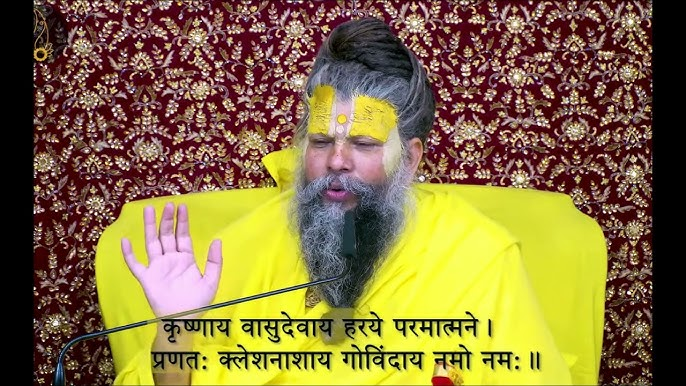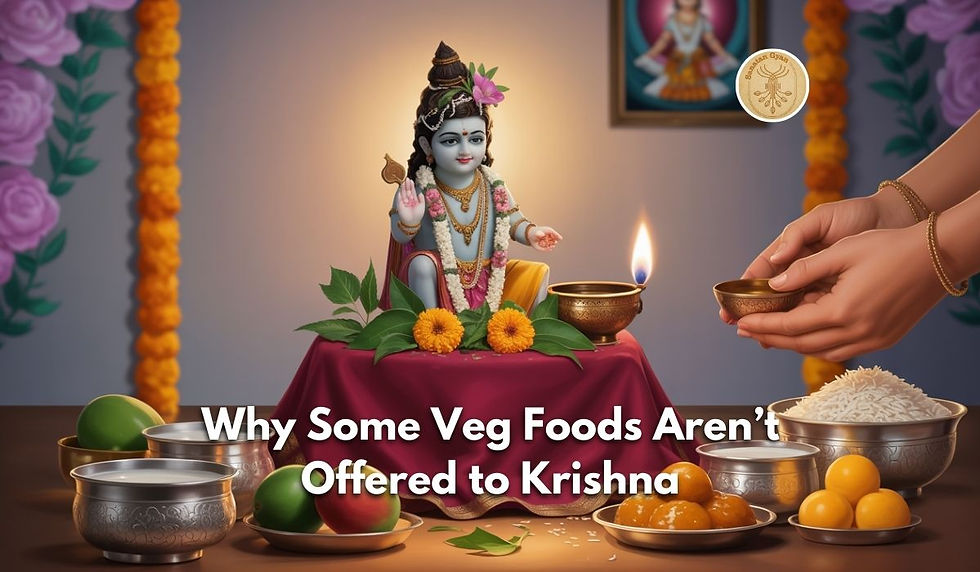Mantra vs Karma vs Dharma: Key Differences in Sanatan Philosophy
- Sonali Singh
- Sep 7
- 4 min read
Sanatan philosophy, or Sanatangyan, is full of timeless wisdom. It helps guide people to understand the deeper truths of life. Mantra, Karma, and Dharma are its key principles. They shape our inner growth and also how we live in the world.
Sanatan philosophy is a vast ocean of timeless wisdom. It has guided seekers for generations. Its teachings are based on the eternal truths of mantra, karma, and dharma. Each of these plays a unique role in creating a meaningful life. Their differences are subtle and worth reflecting on. Together, they show the essence of Sanatangyan. They guide us toward inner peace, responsible living, and ultimate liberation. This brings up an important question: how can we truly understand mantra, karma, and dharma, and use them in daily life to live in harmony with the universe?

Mantra According to Swami Premanand Ji Maharaj
Swami Premanand Ji Maharaj encourages people to chant the Krishna mantra.
ॐ कृष्णाय वासुदेवाय हरये परमात्मने, प्रणत: क्लेशनाशाय गोविंदाय नमो नमः
O Krishna, Vasudeva, Hari, the Supreme Soul, I bow to you, destroyer of suffering, Govinda
This mantra is revered for its ability to remove obstacles, provide peace, and invoke divine protection. Its essence is a deep surrender to Lord Krishna, whom it praises as the Supreme Soul and destroyer of all sorrows.
He advises chanting this mantra daily during Brahma Muhurta (pre-dawn hours) with a japa mala of 108 beads. Chanting it with devotion and focus is believed to bring positive energy. It can help clear blockages caused by karma. It also connects the devotee with divine energy.

Vedic Perspective on Mantra
The Vedas describe mantras as sacred words. They have the power to purify the mind and soul. For example, the Pavamana Mantra from the Brihadaranyaka Upanishad says
असतो मा सद्गमय। तमसो मा ज्योतिर्गमय। मृत्योर्माऽमृतं गमय।
Lead me from untruth to truth. Lead me from darkness to light. Lead me from death to immortality.
This mantra reflects a Vedic belief. Sacred sounds have the power to transform a person. They can also raise the practitioner’s consciousness.
Karma: The Law of Action
If a mantra is medicine for the mind, karma is the work of life itself. Nothing, not even an action, a thought or a word, goes without leaving an imprint. These imprints affect our current life and future experiences. The Bhagavad Gita (3.9) explains:
यज्ञार्थात्कर्मणोऽन्यत्र लोकोऽयं कर्मबन्धनः।
"Work done as a sacrifice for the Supreme frees one from bondage; but work performed for personal gain binds the soul."
Karma According to Premanand Maharaj Ji
Karma (कर्म) literally means ‘an action’ or ‘a deed’ and Nishkama Premanand Maharaj Ji said, ‘Karma’ is not only an action of the body. It also includes every thought, word, and intention. All of these shape the path of our life. He explained that every action has consequences, either immediately or in future lives. This follows the Sanatan Dharma principle of cause and effect.
To explain karma, Premanand Maharaj Ji would often use scriptures. He demonstrated how karma can bind the soul. The selfless action, Nishkama, is the only action that gives liberation. The Bhagavad Gita (2.47) says:
कर्मण्येवाधिकारस्ते मा फलेषु कदाचन।
मा कर्मफलहेतुर्भूर्मा ते सङ्गोऽस्त्वकर्मणि॥
"You have the right to perform your duties, but you are not entitled to the fruits of your actions. Do not let the results be your motive, and do not be attached to inaction."
Premanand Maharaj Ji emphasized understanding this principle. It helps a person act righteously without attachment. This, in turn, purifies the mind and soul.

Dharma: The Eternal Duty
Dharma (धर्म) is the basis of both the mantra and the karma which stems from the root ‘धृ (dhr),’ meaning ‘to uphold or ‘sustain.’ It is a synonym for duty, order, and a moral virtue of the Universe.
Dharma differs from karma, which is simply the actions bound to a result. Dharma tells us what should be done. It is an ethical framework for a life led by the principles of Sanatan dharma. ‘’
The Manusmriti (2.6) states:
धर्मो रक्षति रक्षितः।
"Dharma protects those who protect it."
In Maharajji’s words, ‘Dharma Is the principle which maintains balance in one’s life, the Dharma of the individual, the society and of the Universe," He emphasized spiritually, to deeply follow one’s dharma brings. It also brings peace and liberation ‘’
As the Rigveda (10.63.4) teaches:
यत्र धर्मो रक्षितो भूयात्, तत्रैव सुखं समृद्धिः।
"Where dharma is upheld, there alone flourish happiness and prosperity."
Thus, dharma is more than just an idea—it is a way of life. It is supported by the wisdom of the shastras and the guidance of a guru or sadhu. Dharma serves as an eternal path for all Sanatangyan seeking truth and harmony in life.

In essence, mantra, karma, and dharma are the three main pillars of Sanatan philosophy. Each one guides the mind, our actions, and our moral choices. Together, they show the path for Sanatangyan seekers. They lead to devotion, righteousness, and harmony with the universe.

Comments